Scientists have measured the composition of the hot Jupiter exoplanet WASP-77Ab using an instrument at the Gemini South observatory as the first step in creating a catalog of exoplanetary atmospheres. Plus, looking for ocean worlds and this week’s What’s Up.
Podcast
Show Notes
Planets at right angles around a star
- UNIGE press release
- “The Rossiter–McLaughlin effect revolutions: an ultra-short period planet and a warm mini-Neptune on perpendicular orbits,” V. Bourrier et al., 2021 October 27, Astronomy & Astrophysics
You can’t separate a star from its spots
- Yale press release
- “EXPRES. III. Revealing the Stellar Activity Radial Velocity Signature of ε Eridani with Photometry and Interferometry,” Rachael M. Roettenbacher et al., accepted to The Astronomical Journal (preprint on arxiv.org)
Earth bacteria may make rocket fuel on Mars
- Georgia Tech press release
- “Designing the bioproduction of Martian rocket propellant via a biotechnology-enabled in situ resource utilization strategy,” Nicholas S. Kruyer et al., 2021 October 25, Nature Communications
How to use chemistry to find hidden exoplanet oceans
- NASA JPL press release
- “Unveiling shrouded oceans on temperate sub-Neptunes via transit signatures of solubility equilibria vs. gas thermochemistry,” Renyu Hu et al., to be published in The Astrophysical Journal Letters (preprint on arxiv.org)
Exoplanet’s atmospheric composition measured
- ASU press release
- “A solar C/O and sub-solar metallicity in a hot Jupiter atmosphere,” Michael R. Line et al., 2021 October 27, Nature
What’s Up: Taurid Meteor Shower and Comet Encke
- Taurid meteors fly, now through December (EarthSky.org)
- 2P/Encke (NASA)
- “The hazard from fragmenting comets,” W M Napier, 2019 June 28, Monthly Notices of the Royal Astronomical Society
Transcript
Hello and welcome to the Daily Space. I am your host Beth Johnson, and I am here to put science in your brain.
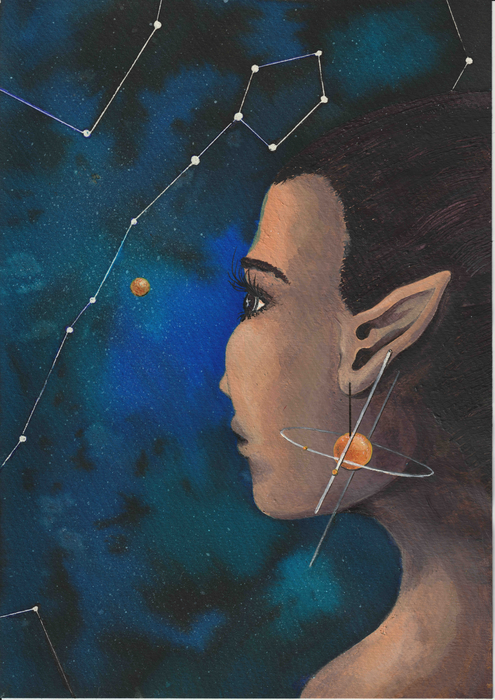
One of the useful things about our solar system is that all the planets and a lot of the smaller bodies orbit in a plane around our Sun’s equator. We get a nice view of the Sun spinning; planets and asteroids are easy to find with a big enough telescope. Mobiles are easy to make, and graphics are easy to draw.
Not all solar systems are like this, it turns out. In a new paper appearing in Astronomy & Astrophysics, researchers describe the right-angle planets orbiting the star HD3167. This system has three known planets. While the innermost world, a 5 Earth-mass rocky world, orbits where expected every 23 hours, the other two planets – two Neptune-sized planets – found their way into orbits at right angles to the star’s rotation and the orbit of the inner super earth. They are much further out, with orbital periods of 8.5 and 29.8 days.
Detecting this odd alignment required the combined efforts of some of the most precise instruments in the world: the ESPRESSO instrument on the Very Large Telescope in Chile. According to team member Vincent Bourrier: We needed a maximum of light and a very precise spectrograph to be able to measure the signal of such a small planet…Two conditions that are met by the precision of ESPRESSO, combined with the collecting power of the VLT.
The star HD3167 is a smaller orange star. It’s not as small as a red dwarf, but it still is just 86% the size of the Sun. It’s thought this star may have a hard-to-find companion that, over time, has moved those two more outer worlds into their weird alignments. That missing possible companion is the target of new search efforts, as researchers work to understand this system.
Finding planets is a major occupation for many observers, and it is made complicated by the imperfections in stellar surfaces. A planet may only block a fraction of a percent of a star’s light as it crosses in front of it. A star spot, caused by the star’s tangled magnetic field, can cause a significantly larger variation in the star’s brightness.
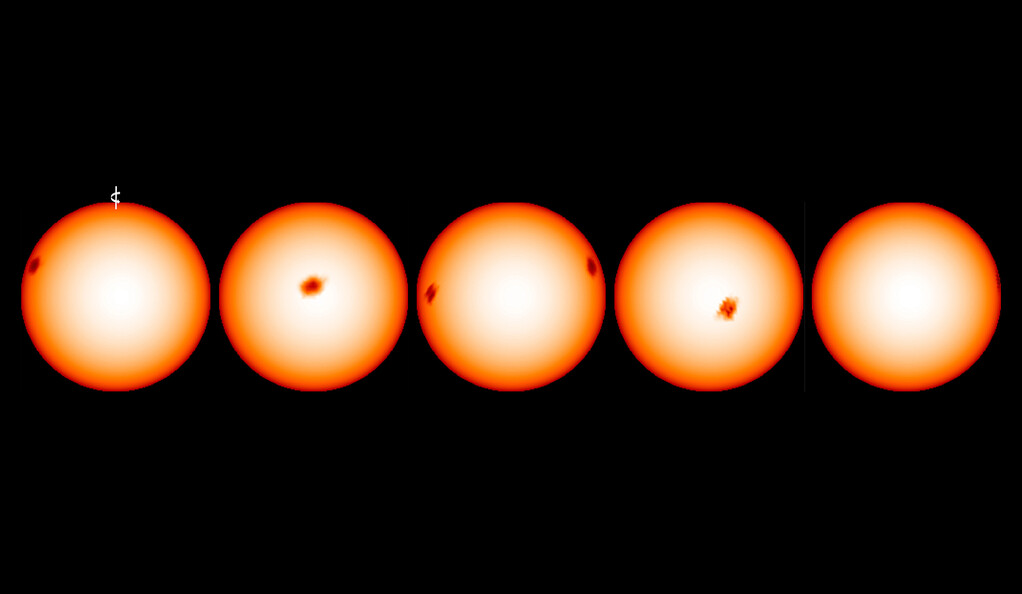
Luckily, starspots come and go with time, whereas planets should keep eclipsing over and over like clockwork. Waiting for those recurring transits, however, is annoying, and pretty much everyone agrees a better way to separate the starspots from the passing planet is needed. You can’t separate a star from its spots, but in a new paper in The Astronomical Journal, researchers led by Rachael Roettenbacher point out how you can at least identify the spots. According to Rottenbacher: Our techniques pull together three different types of contemporaneous observations to focus on understanding the star and what its surface looks like. From one of the data sets, we create a map of the surface that allows us to reveal more detail in the radial velocity data as we search for signals from small planets.
Researchers have been studying starspots on giant stars like Betelgeuse for some time, but this research has made it possible to see spots on a sunlike star for the first time. This work looked at a sunlike star and required combining spectra from the EXPRES instrument on TESS with images from the CHARA interferometric telescope array. Together, this data allowed astronomers to reproduce the starspots on the star and determine its rotation rate.
By the way, they did this work looking at Epsilon Eridani, which according to some sources is the home star of the planet Vulcan from Star Trek lore. That just makes me happy, but really has no baring on the science except isn’t it cool to know the system actually has planets?
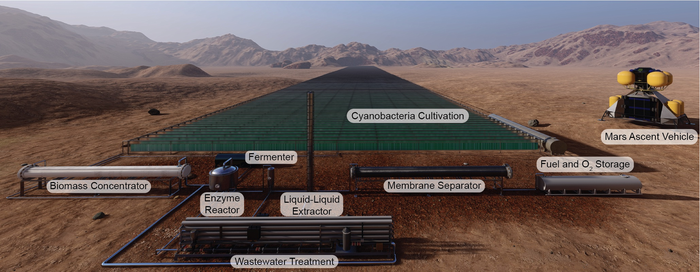
And now for something entirely different. Researchers at Georgia Tech have figured out how to convince Earth bacteria in artificial Mars-like conditions to produce rocket fuel. And honestly, I now want to train bacteria to produce all rocket, car, and home heating fuel, because why not?
Here’s how it works. Cyanobacteria – basically algae – can live in melted water and use sunlight to process atmospheric carbon dioxide into sugars. Hungry E. Coli can then take those sugars and make a propellant that is chemically called 2,3-butanediol. These are Earth-based bacteria and will need to be taken to Mars, but so far, this seems like it will work.
This publication is led by Nicholas Kruyer and appears in Nature Communications. According to the paper’s abstract: A state-of-the-art [biotechnology-enabled in situ resource utilization setup] for 2,3-butanediol production uses 32% less power and requires a 2.8-fold higher payload mass than proposed chemical in situ resource utilization strategies, and generates 44 tons of excess oxygen to support colonization. Attainable, model-guided biological and materials optimizations result in an optimized bio-[setup] that uses 59% less power and has a 13% lower payload mass, while still generating 20 tons excess oxygen.
We now turn from Mars and cyanobacteria back to the wide world of exoplanets. Oh, so many exoplanets. Thousands of them have already been discovered and confirmed, and yet, one of the most common types we have counted in the data is not found in our own solar system – the sub-Neptune – worlds that are 1.7 to 3.5 times larger than Earth but still smaller than Neptune. These are interesting planets that fall between the category of rocky world and ice or gas giant. They may have rocky surfaces. They may even have liquid-water oceans. And they’re probably surrounded by thick, opaque atmospheres.

Now, in a new study published in The Astrophysical Journal Letters, a team of researchers has shown that they can use the chemistry of those thick atmospheres to find out which exoplanets are too hot to support possible liquid-water oceans. That could help us narrow down the search for life beyond our solar system, since liquid water is necessary for life as we know it. I repeat: this is about life as we know it. Let’s find possible life that way before we worry about life as we don’t know it, please.
So how do we go about figuring out the composition of an atmosphere? The best way to do it from here on Earth, since we cannot sample that actual atmosphere, is to use spectroscopy. With spectroscopy, we peer at the light coming from an object, and we break that light into a spectrum. Think of a rainbow smeared out on a paper test strip, and you’ll have the right idea. Now there may be some gaps in that spectrum — black lines where color should be. These are absorption lines, and they show us what molecules are present in the material we’ve studied.
Every atom has a spectral signature — a set of absorption lines it creates based on how many electrons it has and how those electrons are excited when heated up. Molecules also have specific sets of lines based on their atoms, so when we look at a distant atmosphere that is being heated by its parent star, we can read the molecules in the spectra. Neat, huh?
This is an incredibly useful method that can be used on basically anything that radiates heat in some fashion. We’ve even used it to look at the composition of meteors as they burn up in our atmosphere and leave a trail of hot gas behind them.
Several space telescopes have spectrometers on them, including Hubble. So while we cannot get pictures of what’s on the surface of a planet, we can get a sense of the atmospheric composition. Here on Earth, we’d see carbon dioxide and methane, and oxygen. Individually, we could explain each of those molecules without involving life, but the combination of them could lead us to the possibility of life on another world.
Back to those sub-Neptunes and their thick atmospheres. Per the press release: “A thick atmosphere on a sub-Neptune planet would trap heat on the surface and raise the temperature. If the atmosphere reaches a certain threshold – typically about 770 degrees Celsius – it will undergo a process called thermochemical equilibrium that changes its chemical profile. After thermochemical equilibrium occurs – and assuming the planet’s atmosphere is composed mostly of hydrogen, which is typical for gaseous exoplanets – carbon and nitrogen will predominantly be in the form of methane and ammonia.
In a cooler, thinner atmosphere, thermochemical equilibrium would not occur, and a spectrum would reveal carbon dioxide and nitrogen gas instead. Additionally, a liquid-water ocean would change the composition by removing any ammonia, which is highly soluble in water. Lead author Renyu Hu explains: If we see the signatures of thermochemical equilibrium, we would conclude that the planet is too hot to be habitable. Vice versa, if we do not see the signature of thermochemical equilibrium and also see signatures of gas dissolved in a liquid-water ocean, we would take those as a strong indication of habitability.
As we explain in our next story, we’ll have to wait before we can really do a survey of exoplanets and their atmospheres. There’s a certain telescope we’re waiting on.
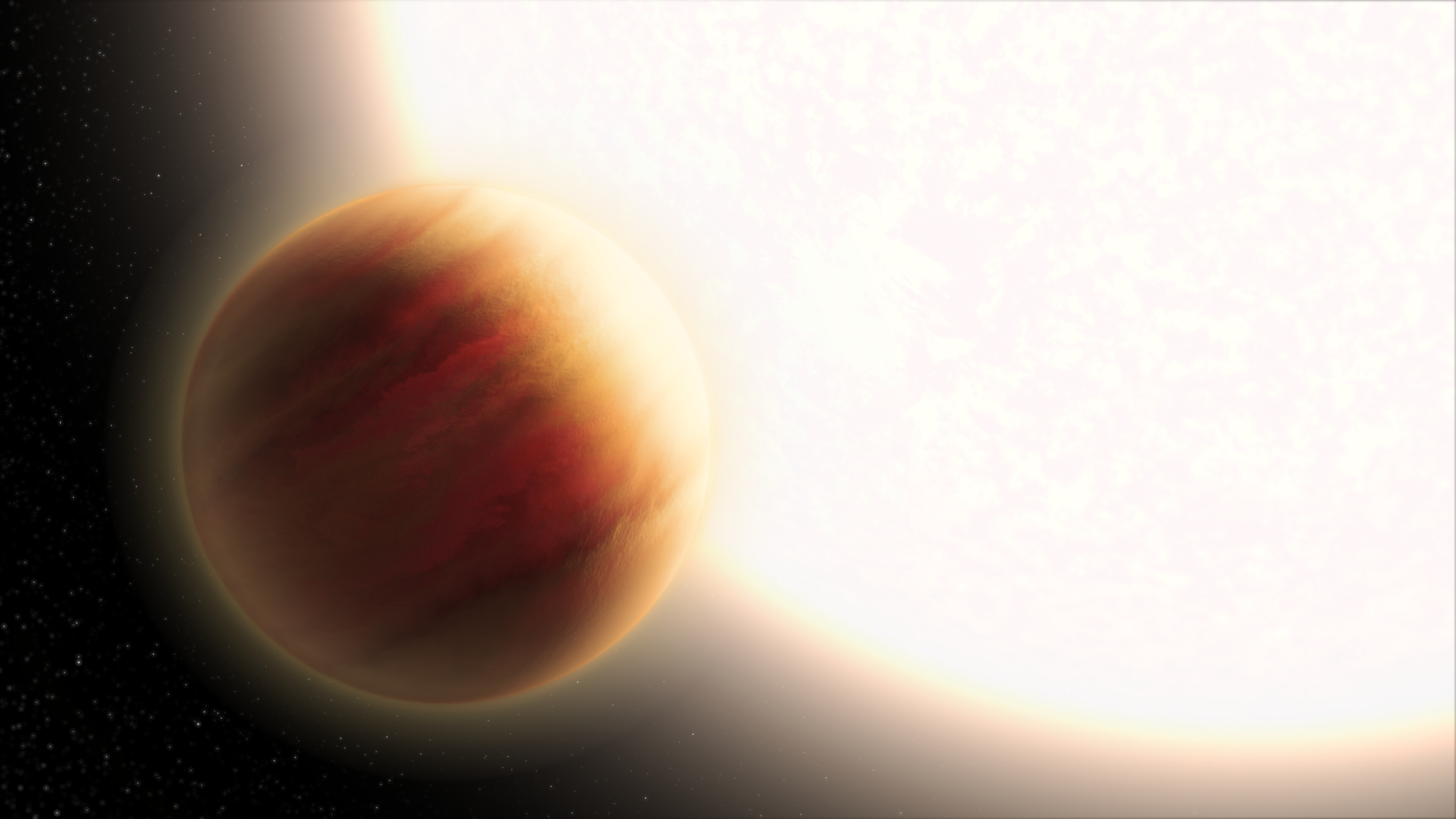
Once again, while we await the launch of the telescope that shall not be named, or really the telescope that should be renamed, scientists continue to find new ways and develop new instruments to get the data they were hoping to get from that telescope.
In a new paper published in Nature, a team of scientists has released the results of an analysis of spectroscopic data taken of exoplanet WASP-77Ab. This exoplanet is a hot Jupiter that was discovered back in 2012. It orbits extremely close to its parent star with an orbital period of about one and one-third of an Earth day. Fascinatingly, the parent star is a part of a binary system, but this planet only orbits WASP-77A.
Of course, being a hot Jupiter means that it’s a prime candidate for an atmospheric study with the instruments we have available. The Hubble Space Telescope has, in fact, been used to acquire spectroscopic data of this exoplanet; however, there have been two problems with this acquisition: 1) telescope time on Hubble is extremely difficult to get and 2) the instruments only measure water. Additionally, when Hubble’s instruments are used to get spectra of planets, the absorption lines are fuzzy and therefore not easy to use to determine the molecules in the atmosphere.
This brings us back to developing new instruments to take the place of the JWST until it launches and is up and running. At the Gemini South observatory in Chile, where the air is dry and thin, scientists have installed an instrument called the IGRINS, a clever acronym that rolls out to Immersion GRating INfrared Spectrometer. And the team involved with this paper used this instrument to observe WASP-77Ab’s thermal glow and collect spectroscopic data.
Unlike with the Hubble data, the absorption lines captured by IGRINS were perfectly clear, and from those lines, the team measured the amounts of water AND carbon dioxide. These measurements then allowed them to estimate the relative amounts of oxygen and carbon in the atmosphere. Lead author Michael Line notes: These amounts were in line with our expectations and are about the same as the host star’s. This work represents a pathfinder demonstration for how we will ultimately measure biosignature gases like oxygen and methane in potentially habitable worlds in the not-too-distant future.
From here, the team plans to measure the atmospheric composition of at least fifteen more exoplanets, building a database of gas abundances that they can compare against each other and against our own solar system to understand the origins and even evolution of plants. And maybe, just maybe, they can use that data to find biosignatures on other worlds and give us a hint that we’re not alone in the galaxy.
What’s Up

This week in What’s Up is another meteor shower, the Taurids. The Taurids are better than most meteor showers, lasting for months compared to the weeks of the Orionids and Draconids we’ve previously talked about.
There are two different Taurid radiants, those apparent points in the sky where the meteors come from; these are the Northern and Southern Taurids. The Southern Taurids became visible early last month and will continue into next month. The Northern Taurids became visible last week, October 20, and will continue to be visible until early December. Don’t worry, the radiants for both streams are fairly close together, around the constellation Taurus that gives them their names.
Taurus is easy to find, with the bright red star Aldebaran straight in the middle of the constellation. Right next to the Taurus constellation is the incredible open cluster the Pleiades, Messier 45. The radiant for the Northern Taurids is in this open cluster. The Southern Taurids are just below the Pleiades in a line to the south.
Now our usual advice on how to see a meteor shower: with the unaided eye, the widest field of view you can get. Be sure to let your eyes get well adjusted to the dark; don’t use a planetarium app on your phone. Even if it has a red light function the brightness will impact your dark adaption.You can download a map from a link at our website and print it out to bring with you to the field. Use a proper red light flashlight to see the map when you’re out. You can get one from Amazon using our affiliate link so we can benefit as well. A zero gravity chair or hammock may also be helpful for remaining comfortable for hours of looking for meteors.
If you want to try to take pictures of this meteor shower the best way to do that is to use an interchangeable lens camera with a wide angle lens, at least 20mm, wider if possible. Erik likes the new Canon RF 16mm f/2.8 lens which he rented this past week to try out.. And he apologizes for the clouds. This camera is inexpensive, and the image quality is good for its low price. Note: We are not sponsored by Canon, but we could be.
We discussed in last week’s Whats Up segment some tips for landscape astrophotography, but here’s a refresher on the basics: mount your camera on a tripod and take long exposures using bulb mode with a remote shutter release cable (but not an app on your phone because you want to preserve your night vision) and you might capture a few meteors.
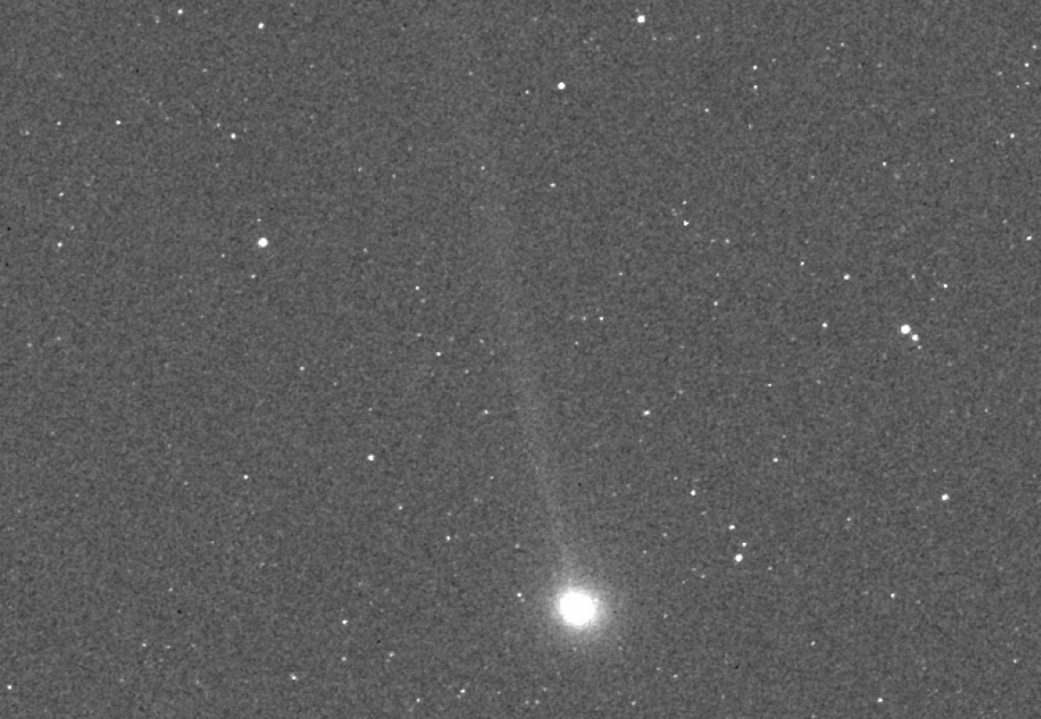
The meteor stream that produces the Taurid showers is Comet 2P/Encke. Comet Encke was discovered by french astronomer Pierre Mechain in 1786 and was subsequently observed by other astronomers in the years after. It wasn’t named after any of them, however. It wasn’t until 1818 that astronomer Johann Encke calculated that the comet all of these people had seen before was in fact the same object, and so he got the comet named after himself.
Scientists have continued to analyze the comet and its effects on the Earth. A 2019 paper in the Monthly Notices of the Royal Astronomical Society with first author W.M Napier tied debris coming from the comet, or a predecessor comet, to a catastrophic series of impacts about 12,000 years ago in the Younger Dryas Period. The impacts caused hemisphere-wide wildfires, a 1,300-year-long ice age, disrupted human development, and caused the extinction of “35 genera of North American mammals”.
In the paper, evidence for cometary impacts in the northern and southern hemispheres is given, including platinum-rich dust and “glassy microspherules” which can come from impact events, along with charcoal indicating large fires. At the same point in the geologic record is evidence of mass extinction in both hemispheres. The paper explains that the impacts came from a large comet that broke up 20,000 years ago, forming many comets and debris including 2P/Encke, the group being called the “Tauroid Complex”.
The paper goes on to mathematically demonstrate that a comet like Encke could have formed this way through a series of fragmenting events, and that the impact of fragments and dust from Encke on the Earth could have caused the changes observed in the geologic record. Particularly, the paper explains that rapid temperature changes in other time periods were caused by impacts and the dust spread by them sticking around in the atmosphere for many years and cooling the Earth, by 2-6 degrees C in the case of the Younger Dryas Period cooling. Comet Encke has produced more than pretty streaks in the sky, it seems.
Remember, go outside and look up.
This has been the Daily Space.
You can find more information on all our stories, including images, at DailySpace.org. As always, we’re here thanks to the donations of people like you. If you like our content, please consider joining our Patreon at Patreon.com/CosmoQuestX.
Credits
Written by Pamela Gay, Beth Johnson, and Erik Madaus
Hosted by Pamela Gay and Beth Johnson
Audio and Video Editing by Ally Pelphrey
Content Editing by Beth Johnson
Intro and Outro music by Kevin MacLeod, https://incompetech.com/music/


 We record most shows live, on Twitch. Follow us today to get alerts when we go live.
We record most shows live, on Twitch. Follow us today to get alerts when we go live.